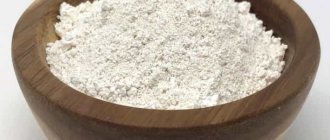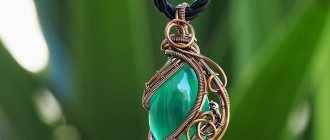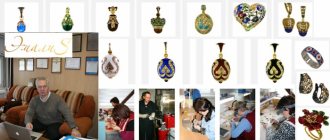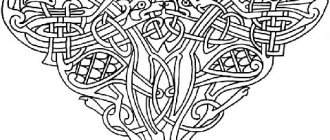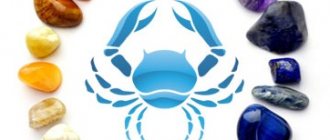Confidence in life is the most important thing, and if we are talking about a diamond, then the degree of confidence in its assessment is important to document, in order to protect yourself from scammers. The official certificate serves as a guarantor of compliance with the declared parameters of the gemstone (weight, color, purity, shape, etc.). Prepared gemological reports may be called a passport or a laboratory report, but most often experts issue the document in the form of a certificate.
Diamond certification is carried out for stones without settings in laboratories that have the appropriate status. During the research, characteristics that are characteristic of a particular specimen are determined. The institution that sets the tone for global diamond quality standards is the Gemological Institute of America (GIA); in Russia, the Gemological Center of Moscow State University is the leader in the field of diamond certification.
Is there a need to perform the procedure in the Russian Federation?
At the moment, the government of our country has determined the voluntary confirmation procedure declared by the manufacturer-seller of the level of goods (Article 21, Federal Law No. 184), which relate to the field of jewelry (chains, watches, cufflinks, earrings, pendants, necklaces, hairpins, brooches and other accessories). They require obtaining a declaration of the GOST R or SGR type, based on the classification of a particular product.
Amendments to Law No. 982 dated December 1, 2009, previously included the above list of jewelry in the list of mandatory certification, however, new changes dated November 13, 2010 under number 906, introduced by the government of our country excluded jewelry products from this name.
What kind of decorations are these?
The type of product that has the right to be called jewelry always includes precious metals, alloys or stones.
If in the production process of such products not only natural but also artificial materials were used, then such product products still remain jewelry.
Items not included in the official list of jewelry industry products:
- Haberdashery.
- Coins for payment.
- Awards given by the state.
- Attributes related to objects of worship.
Do we receive paper for goods containing diamonds and other precious stones?
In the above-mentioned area of the jewelry industry, mandatory authentication is required only for diamonds that have not been cut and are in retail trade (Government Decree of the Russian Federation of January 19, 1998 No. 55); for processed diamonds there is no such condition.
Decree of the leadership of the Russian Federation dated April 5, 1999 No. 372 regulated the register of all forms of valuable metals , stones and products made from these raw materials, which must be declared.
Paying attention to the rather high cost of this kind of item, the seller’s best decision would still be to voluntarily decide on a gemological examination of his products.
Firstly, this procedure will expand the potential market for the sale of precious products. Secondly, among collectors who have a passion for expensive accessories, such a seller will gain enormous authority and trust.
How does the certification process work?
To have a GIA certified diamond, you will have to send it to the Institute's laboratory. To do this, it is recommended to use a reliable courier service and insure your stone in advance.
Once GIA receives your diamond, trained gemologists will examine the most important quality characteristics of the stone and assign a grade to each one.
For example, the clarity of a diamond is assessed under ten times magnification to determine the number, visibility and position of any detectable flaws that may be present in the stone.
Your diamond's proportions will also be measured, and depending on how close they are to what are called "ideal diamond proportions", the stone will be cut into a quality grade, ranging from excellent/ideal to poor. (This is mostly true for round diamonds; most other diamond cuts do not have such precise proportion estimates.)
A diamond's proportions and cut are its most important features, as they determine how much light the stone will reflect and how shiny it will appear.
Who has the right to provide services?
Legislative act numbered, approved by the Russian government on January 23, 2004, secures the rights to provide certification services in a full list of organizations, where the main criterion for the center issuing a document of authenticity is the presence of a license to authorize this type of activity.
Among the companies located in the Russian Federation, the most reputable ones include:
- Gemological laboratory of Moscow State University.
- State Assay Chamber.
- Gemological Center of Smolensk and Yakutia.
Famous large organizations abroad:
- Gemological Institute of America.
- Supreme Diamond Council of Antwerp.
- The largest research centers in Switzerland, Germany, Belgium.
What information does the document contain?
The authentication document contains the following information:
- The name of the examination carried out on the gemstone.
- The name of the center that carried out such an analysis, its registration number, address, telephone number, postal address on the Internet.
- Date of laboratory testing.
- Assigned certificate number.
- Cut shape in carats.
- Size indicated in millimeters.
- The weight of a diamond.
- Object proportions.
- Fluorescence.
- Classification data according to TU 117-4.2099-2002 and ISO TR.
- Drawing of the stone from above, below and in profile, indicating height, width, length.
- Conclusion of the examination.
- Signature and initials of the head of this center.
Sample certificate:
When a buyer comes across a diamond in whose certificate the phrase “Replacement cost” appears, followed by an amount in foreign currency, then you need to understand that this luxury item was a participant in a study of a foreign company and this document cannot be considered a full-fledged certificate, since in Russia it is recognized as just an expert opinion.
The certificate, which has passed an independent gemological test, proves the purity of the cut, the angle of refraction of light passing through the diamond, the carat volume and its origin.
High quality diamonds.
The diamond certificate issued by the GIA contains grades indicating the quality of color, clarity and cut, as well as the carat weight of the stone (1 carat = 200 milligrams).
These four most important quality characteristics, also called the “4 Cs,” are what buyers are most interested in in a performance appraisal report.
Color
This characteristic indicates how colorless the stone is. The GIA assigns a cultivar to a color using the letters D (colorless) to Z (light yellow).
In general, the less colored a diamond is, the higher its color grade.
Purity
Clarity refers to how clean a stone appears under ten times magnification.
The fewer internal defects (inclusions) and external imperfections a diamond has, and the less visible they are, the higher its purity grade.
The GIA evaluates purity using grades ranging from IF (Internally Flawless) to I (Incorporated).
Cut
The quality of the cut in a diamond report depends on how close the stone's proportions are to what is known as the ideal cut, which produces maximum brilliance and brilliance in a round diamond.
The highest cut grade is “excellent cut,” and the lowest is “poor.”
Carat
This is a number that indicates how much a diamond weighs and is measured in carats. (1 carat is equal to 200 milligrams or 0.2 grams.) In general, because large diamonds are rarer, they are disproportionately more valuable than small ones.
Guide to action
In order to begin the compliance process for a certain type of jewelry, you will need to contact the certification center in your city. They usually post their addresses on their Internet pages. There you can also familiarize yourself with the center’s pricing policy. On average, prices vary from 3,000 rubles to 30,000-50,000 rubles, it all depends on the complexity of the product and the service package.
The application is submitted through the site itself online or in person by visiting the organization where certification processes are carried out.
The center employee will definitely inform you of the entire list of required documents:
- Application for certification.
- A copy of the manufacturer’s passport, when it comes to individual entrepreneurship, or the registration number of the factory where the jewelry was cast.
- Detailed characteristics of the product (type, color, material, etc.).
- The product itself or its tester for laboratory examination.
Certification stages:
- Signing an agreement between the center (gemmology laboratory) and the jeweler-entrepreneur.
- Research into the subject of the authenticity process. (type, number of fasteners, color, weight, etc.).
- Photography (each compliance document includes a high-quality image of the product).
- Discussion of the received data with the customer of the procedure.
- Recording of the received certificate in the general database of gemological checks, with an individual number.
The terms for issuing a finished document of authenticity range from 1 to 30 days. It all depends on the type of research object; the simplest goods are checked within 24 hours. You can receive your certificate at a certification institution or by mail, if the customer has left the relevant data.
Buying diamonds, not fairy tales about them. Confessions of a Diamond Dealer.
This article is dedicated to the end buyers of diamond jewelry, although jewelry manufacturers may also find something useful here. I will also immediately note that all of the recommendations listed below mainly relate to the purchase of diamonds outside of Russia.
It so happens that most people mistakenly believe that diamonds are something rare and very expensive. In fact, diamonds, from which diamonds are actually cut, are mined in huge quantities, but only a small part of them has a high value. Approximately 3/4 of diamonds are generally used for technical needs due to the lack of any jewelry value. The remaining quarter of the best samples are cut, but this does not mean that all these stones are of high value. In fact, only a tiny fraction of them are highly valued. Absolutely, or at least relatively colorless and pure stones are truly valuable. Such stones are a tiny percentage of the total mass. After all, the bulk of diamonds, even jewelry-quality ones, have certain shades, most often yellowish or brown, as well as significant inclusions inside the stone. All this significantly reduces the value. For example, the cost of a colorless diamond weighing 1 carat can vary approximately 40 times and have a price range from $500 to $20,000.
In addition to colorless diamonds, there is also a group of colored ones. And the price range among colored diamonds is even wider, and the idea that all colored diamonds are highly valued is wrong. Only diamonds of rare colors (red, pink, blue, green) are highly valued. Diamonds of brown, yellow or mixed colors do not have a high value and are generally worth significantly lower than the same colorless diamonds. The value is influenced by the intensity of the color, and only the brightest examples of the same yellow diamonds can compete in value with colorless ones. Specimens with a slight yellow color, as well as any brown diamonds and stones with yellow-brown hues, which are often given the commercial names “cognac” and “champagne,” do not have high value. Sellers often take advantage of the fact that Rapaport does not keep statistics on prices for colored diamonds and the end consumer simply does not even know the approximate prices for these stones.
In general, many players in the diamond business build their business solely on ignorance of consumers. And this does not mean that you are always deceived; basically, they simply do not tell you or tell you only part of the information that is beneficial to the seller. Therefore, the final result in the form of price and quality of purchased stones will depend solely on you and your knowledge. They will talk to you and offer you options based solely on the level of knowledge you demonstrate. And it doesn’t matter where you look for stones or jewelry, in a store or at a diamond exchange. For some reason, many people think that if they decide to buy something on the stock exchange, they will definitely win something.
Firstly, the very fact of buying something on the stock exchange is already erroneous. The fact is that trading in stones on exchanges is carried out exclusively by members of the exchange and entry is closed to others. When you are brought into the exchange building to sell jewelry or stones, you are taken to one of the offices, but in this case, such offices, even while located in the exchange building, act as a retailer. Prices in this case will have nothing to do with internal exchange prices and will depend, again, solely on the level of your knowledge; prices will be announced solely on the basis of their impression of you. I won’t even talk about the shops located around the exchange! Their location is a banal marketing ploy to associate oneself at least somehow with the exchange. Both these shops and offices inside the exchange are regularly visited by groups of tourists from all over the world. And if you ever happen to find yourself in such a group, never, under any circumstances, buy anything in the place where the guide took you! It works like this: guides always bring tourists to the most expensive places, because only a store or office with crazy markups can afford to cooperate with guides who ask for up to 30%, and not profit, but gross prices! A guide is always “an extra mouth on the buyer’s neck.”
In order to buy worthwhile diamonds for the right price, you first need to understand the basics.
First, take into account the Rapaport sheet, this is statistics on average market prices for diamonds. The price for you, as the end consumer, should not significantly exceed the price in the sheet if the stone is close to ideal, and should be lower than the sheet if the stone has poor cut quality, irregular geometry and fluorescence. Also consider the fact that fancy diamonds (any shape other than a circle) are generally valued at a quarter less than round diamonds.
And second, consider only diamonds whose characteristics have been confirmed by the GIA laboratory. Without a certificate, you are highly likely to be deceived to one degree or another. Therefore, stand firm and do not give in to the persuasion of the seller, who will diligently persuade you to buy something with certificates from other laboratories or without them at all. You will hear the following arguments from sellers: the stone is too small for GIA inspection; verification takes a long time; checking is expensive and will greatly increase the price of the stone and much more. All these myths, which have already taken root in the brains of many people, are spread either by incompetent market participants who do not have the slightest idea about diamonds or the work of laboratories, or dishonest market participants who do this on purpose.
Therefore, if you hear from any jeweler or jewelry seller at least one of the myths I mentioned below, run away from there, because this is either an incompetent person or a scammer with whom you should not deal when buying jewelry. The first one will not sell you anything good due to his incompetence, and the second one will deliberately mislead and deceive you!
AND NOW ABOUT THE MYTHS:
Myth one. GIA does not accept diamonds weighing less than 1 carat or 0.5 carats for inspection, according to various sources. This is complete nonsense! GIA accepts stones of absolutely any size for inspection! This is confirmed by a photo of the result of testing a diamond weighing only 0.03 carats by the GIA laboratory! (see photo 1).
Photo 1. The result of testing a diamond weighing 0.03 carats by the GIA laboratory
Myth two. Inspecting diamonds at GIA is expensive, so it is not cost-effective to have small stones inspected. It's a bullshit! The GIA laboratory has a clearly stated price list for their services, which you can view on their official website. Diamond inspection costs between $50 and $100 per carat, depending on the certificate format. That is, the price of inspection directly depends on the size of the stone: the smaller the stone, the cheaper the inspection will be. Therefore, it is quite advisable to submit diamonds for certification even weighing 0.3 carats; there are a huge number of stones of this size that already have GIA certificates on the market, and this is justified; you can see an example of such a certificate in photo 2. Even good stones weighing 0.2 carats should be submitted for verification quite justified! After all, if the stone is good and costs, say, $300, why not get a certificate for it confirming its good characteristics by paying only $30. If a stone does not have a certificate, believe me, this is not due to the laziness of the seller or his saving of this $30; stones that have serious problems that the seller wants to hide from you are not submitted for certification; why does he need a certificate where all the negative aspects of the stone will be indicated! Therefore, if there is no certificate from a reputable laboratory for stones, especially those weighing about half a carat or more, you should be wary!
Photo 2. Certification of a diamond weighing 0.3 carats.
Myth three. GIA verification takes a very long time. Firstly, on the diamond market, suppliers sell a huge number of stones already with GIA certificates, and it is not difficult for a jewelry manufacturer to buy such stones if you don’t want to wait for verification. Secondly, the inspection itself usually takes about three business days, which, in my opinion, is not very long for one of the most competent and professional diamond inspections in the world. Therefore, if you are considering buying diamonds in the area of one of the diamond exchanges, where, in fact, the laboratories for testing stones are located, such excuses from sellers are groundless.
Myth four. GIA deliberately understates the characteristics of diamonds in order to appear cooler than everyone else. Such statements are, in my opinion, the height of cynicism, because all tables and testing standards, which are used by many laboratories around the world, except for Russia, where Moscow State University still works according to its own standards, are the brainchild of the GIA Institute, which began studying stones back in 1931 and is the founder of the entire stone inspection industry! So, GIA cannot underestimate anything by definition; all tables and criteria are their own standards. Therefore, it is not GIA that underestimates, it is other laboratories that overestimate, playing into the hands of the seller. After all, if a laboratory takes GIA tables as the basis for its work, it is logical to assume that it must also comply with GIA standards.
So if you hear the above-mentioned myths from sellers of diamonds, or jewelry with them, run away from them, they are trying to fool you!
But even if you have a GIA certificate, you should not let your guard down, otherwise they may sell you a bad, worthless stone, but at the same time tested by a serious laboratory. The fact is that the presence of a certificate does not mean that the stone is good or valuable, because laboratories simply describe all the characteristics of the stone as is, so it is important to be able to read the certificate and take into account all the factors.
Photo 3. An example of a certificate displaying information about the strengths and weaknesses of the stone.
Cunning sellers often resort to tricks, namely, sending problematic stones with low value to famous laboratories for testing, in order to thus give significance to their stones, taking advantage of the fame and name of the laboratories issuing certificates. And then they sell these stones at inadequate prices in the hope that the average buyer does not know how to read certificates, but will blindly believe that the stone has a serious certificate. As a rule, even a cheap stone does not have all weak sides and may have several strong points; the seller will use this when communicating with the buyer, focusing only on the strengths of the stone, demonstrating this in the certificate, and will remain silent about the weak points. An example of this is the certificate in photo 3. This stone has a fairly high clarity (VS-1) and cut quality (Exellent), and the seller will focus on these strengths. But it will ignore the very low color (M); in addition, the stone has a brown tint (brown), which greatly reduces the value of the stone! The stone also has a strong degree of fluorescence, which also negatively affects the value of the stone!
Photo 4. An example of a certificate displaying information about the strengths and weaknesses of the stone.
The second example is the certificate in photo 4. This stone has a high color (F) and fairly good clarity (si-1). But at the same time, the quality of the cut and polish (Good) is poor! This rating, despite the fact that it is translated as “good,” indicates serious deviations and will have a detrimental effect on the appearance of the stone and, as a result, significantly reduces the value of the stone. You should not consider the cut quality below Very good! Also, this stone has incorrect geometry (the stone is too elongated, the depth of the stone is 66% of its diameter, but should be 60%), this will have a detrimental effect on the return of light entering the stone, therefore, the stone will play poorly, and also such a stone will lose and externally, because due to the fact that it is elongated, the stone is smaller in diameter and, having a weight of 0.5 carats, will look like a normal stone weighing 0.45 carats (the stone has a diameter of 4.92-4.94 mm, while a regular half-carat should be about 5.15 mm)!
Photo 5. An example of a good diamond certificate.
In photo 5 you can see a certificate of a good diamond, worth both money and attention! The stone has the correct geometry (both depth and surface are close to 60%), high cut quality (3 Excellent), no fluorescence (None), high color (E), good clarity (VS-2). There was also no intervention in the stone (artificial improvements in color and clarity), by one method or another. For example, the cleanliness of a stone can be improved by removing inclusions with a laser and filling the voids with silicone or glass melt. Color can be improved by decolorizing the stone with HPHT technology or, conversely, by enhancing the color when it comes to colored diamonds. The color can also be enhanced by radiation by irradiating the stone. The fact of such interventions is always recorded in certificates; you can see an example in photo 6. Keep in mind that treated stones cost incomparably less than untreated ones.
Photo 6. An example of a certificate for artificially refined stone.
So buy diamonds with certificates from reputable laboratories and do not forget to carefully study each point, and also use the Rapaport sheet and you are highly likely to become the owner of worthwhile diamonds!
Authors: Vitaly Sayko and Igor Stiller
Vitaly Saiko Entrepreneur, blogger. International company Shtiller&V.S Ltd (Israel)
Is it necessary to register?
The jewelry seller himself will not have to do additional registration, since this service falls entirely on the shoulders of the certification body.
At the final stage of the study, to determine whether the product meets quality standards, a clause is written in which the research center undertakes to officially register the certificate issued by it in the Unified Register.
Thus, the actual writing to the general registry list is done by default.
Who needs a certificate of conformity?
Both the seller and the buyer are interested in having a certificate of conformity for a diamond.
The seller, when ordering a certificate of conformity, purchases a presentation document that makes it possible to increase the liquidity of the product, and the buyer, when purchasing a certified diamond, receives detailed personalized information about the item of purchase.
Types of certificates

